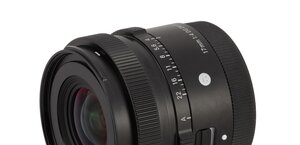Sigma 180 mm f/2.8 APO Macro EX DG OS HSM
3. Build quality and image stabilization
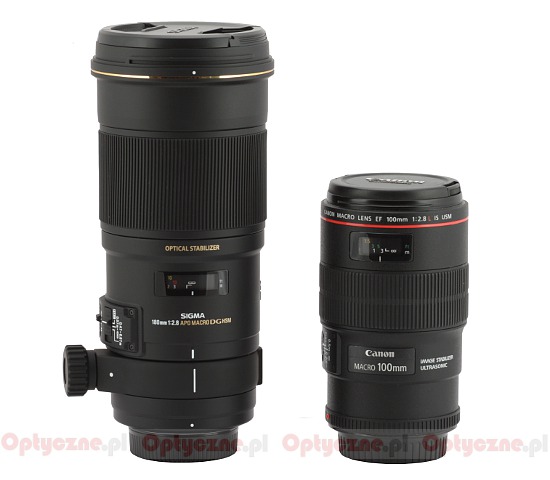 |
The tested lens starts with a metal mount and contacts; the mount surrounds an immobile rear element which is 3 cm in diameter. It hides inside the mount about 1.5 cm deep. The area around it is dark and matt, you can’t see any electronic parts next to it.
Please Support UsIf you enjoy our reviews and articles, and you want us to continue our work please, support our website by donating through PayPal. The funds are going to be used for paying our editorial team, renting servers, and equipping our testing studio; only that way we will be able to continue providing you interesting content for free. |
- - - - - - - - - - - - - - - - - - - - - - - - - - - - - - - - - - - - - - - - - - - - - - - -
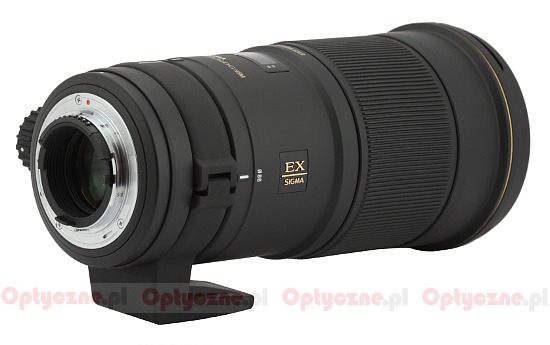 |
The proper body of the lens starts with a metal, black fragment of the casing where you find just a white dot, making the alignment with the camera easier. Further on you see a tripod adapter which comes in the box with the lens. The body behind the adapter is covered by black, smooth plastics. First there is the name of the lens and its parameters. On the left you can find a series of switches. The first of them allows you to choose the range of the focusing mechanism – there are three possibilities: FULL, from 0.67of a meter to infinity and from 0.47 to 0.67 of a meter. The second switch, marked as AF-MF, is used to choose a mode of the focusing mechanism. The third and the last switch allows you to operate the optical stabilization. You can turn it off (OFF) or set in 1 (normal) or 2 (panoramic) mode.
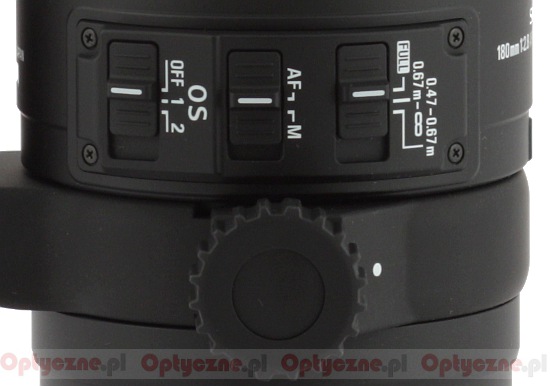 |
Above the inscription with the name and the parameters of the lens you get a window with a distance scale, expressed in metres and feet. It is a pity the producer didn’t decide to add a depth of field scale as well.
The next element is a huge (its width amounts to as much as 55 mm) and ribbed manual focus ring. Its work is smooth and well-damped. Running through the whole scale takes a turn through as much as 270 degrees. Such a wide angle allows very precise settings in the macro working distances but in normal distances it fares not so well. If you want to run the scale from one meter to infinity you must turn the ring through 90 degrees.
Behind the ring there is an immobile part of the casing with a golden stripe (characteristic for the EX series) and a hood mount. It surrounds a non-rotating filter thread, 86 mm in diameter, and a front element, immobile as well, with a diameter of 77 mm. The front element is hidden just slightly inside the casing - about 0.5 cm deep. It’s also worth adding that while taking photos with 1:1 reproduction ratio your photographed object is situated in the distance of 21.5 cm from the front element.
When it comes to the optical construction Sigma company certainly wasn’t stingy. You get overall 19 elements positioned in 14 groups. As many as three elements are made of FLD low dispersion glass which optical properties are supposed to match those of fluorite. Inside you also find a circular aperture with nine blades which can be closed down up to the value of f/22.
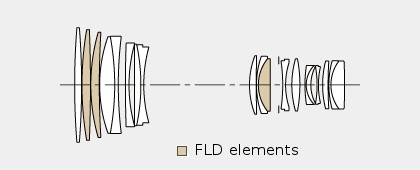 |
When it comes to the EX series you can’t carp about the number of accessories – there are as many of them as it should be in the case of an expensive, top-of-the-range instrument. Buyers get both caps, a solid, metal tripod adapter, a hood with a special extension for the APS-C/DX format and a stiff case of high quality with a strap. If the producer added to that an UV filter, protecting the front element, you would get indeed a perfect package. Still I have to admit such a requirement goes slightly over the top – an 86 mm filter is rather expensive. On the other hand, though, Sigma like surprising their customers with different special offers and they have added UV filters to their lenses free of charge before. Perhaps they will be tempted to do it again also in the case of this lens.
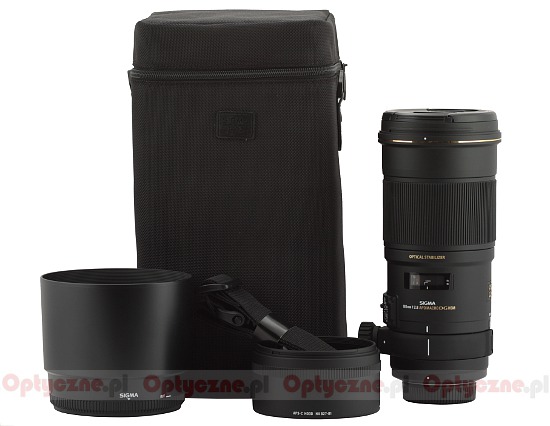 |
It is also worth mentioning that the tested lens is compatible with 1.4x and 2.0x Sigma APO teleconverters.
Optical stabilization
Sigma boast that the optical stabilization, used in the tested lens, is as efficient as 4 EV. Of course we didn’t fail to check that claim. In order to do that we took several dozen photos at every exposure time ranging from 1/200 to 1/4 of a second for the stabilization switched on and off. A graph, which you can see below, shows the percentage of blurred photos as an exposure time function, expressed in EV; the zero points corresponds here to 1/160 of a second.
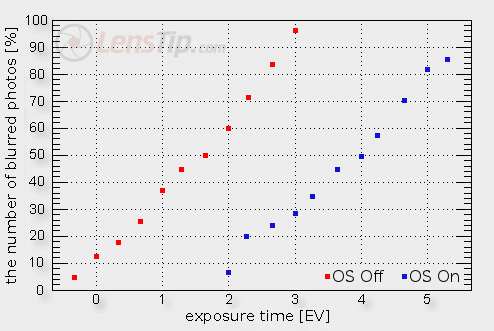
The result is a bit surprising. I admit I got used to the fact that few lenses reach those declared 4 EV (it concerns not only Sigma lenses but also instruments of other makers). However I expected a result on the level of 3-3.5 EV and here the value we got is even lower. The maximum distance between both curves amounts to 2.7 EV and so we assess the efficiency of the stabilization of the tested lens. It is not a bad result but it hardly impresses if you take into account the amount of money you must pay for the Sigma.





